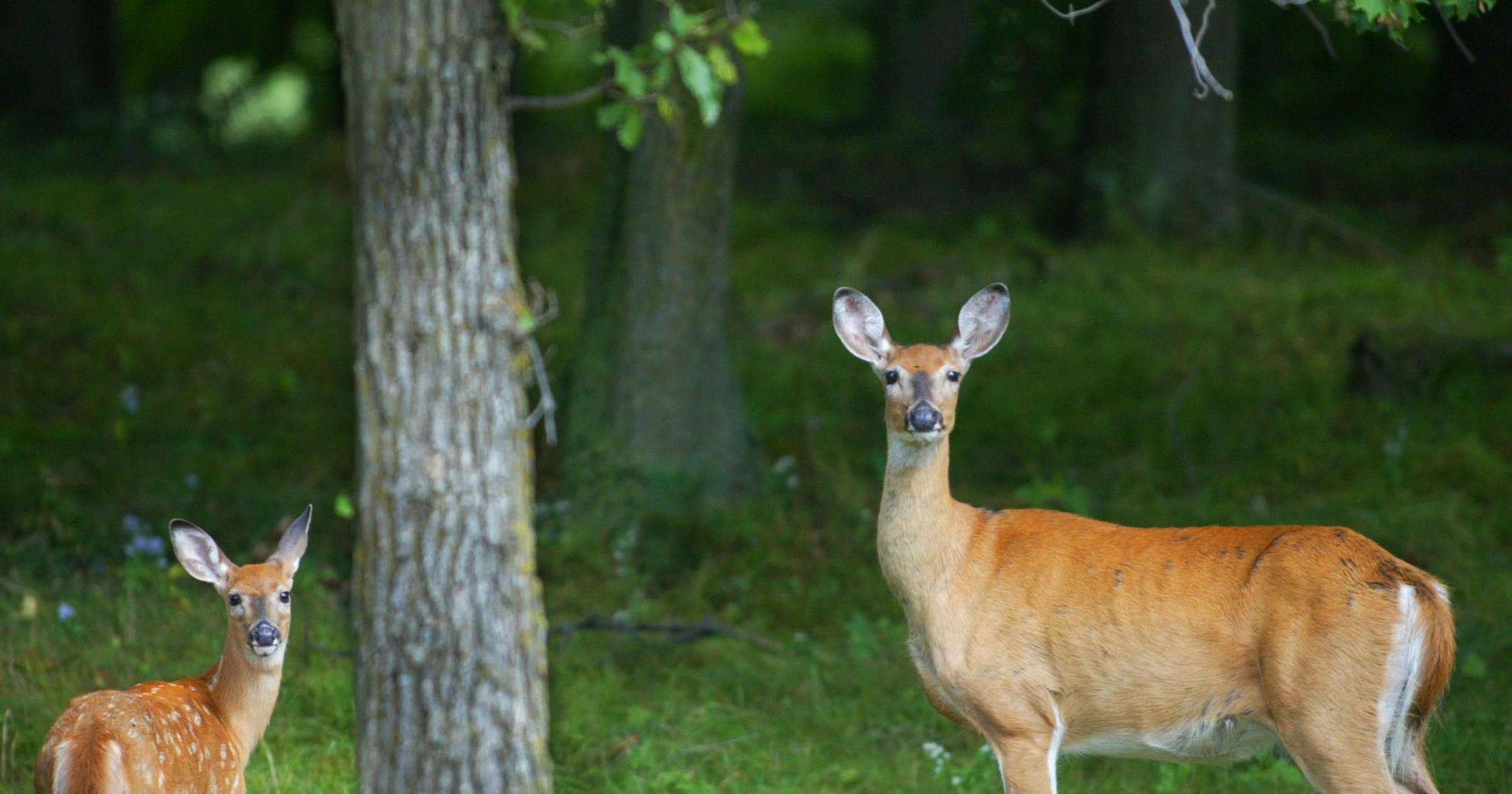Star Tribune
Rare and fatal brain disease in two deer hunters heightens concerns about chronic wasting disease (CWD)

Two friends who hunted deer together at the same lodge contracted an extremely rare brain disease and died, raising fears that they may have been infected by contaminated venison.
A team of neurologists at the University of Texas Health Science Center at San Antonio presented the case at a conference last week, saying the deer herd surrounding the lodge is known to be infected with chronic wasting disease (CWD) – a fatal brain disease in deer caused by misfolded prion proteins.
“The patient’s history, including a similar case in his social group, suggests a possible novel animal-to-human transmission of CWD,” the researchers wrote.
But scientists at the National Prion Disease Pathology Surveillance Center and the Centers for Disease Control (CDC), which have been monitoring these types of illnesses for decades, said that it is highly unlikely that venison or chronic wasting disease had anything to do with the deaths of the two men.
“We do not agree with the suggestion that these cases were caused by consumption of deer meat,” said Dr. Ryan Maddox, a senior epidemiologist and deputy chief for the CDC.
Scientist have long feared that chronic wasting disease could jump from deer to humans. That wouldn’t just be dangerous to human health, but devastating to the outdoor economies of Minnesota, Wisconsin and much of the Midwest where deer hunting is woven into the culture.
The disease is not treatable and is always fatal in deer. It’s from a family of diseases that has baffled scientists for years. They’re not caused by a virus or bacteria. Rather, prion proteins inside the infected brain fold the wrong way, disrupting connections and killing cells. The misfolded proteins self-replicate, increasing the damage until the brain no longer functions.
There have been no known cases of chronic wasting disease spreading to humans since the disease was discovered in captive game farms in the 1980s, or even as it has rapidly spread in wild deer populations throughout half of the United States over the last 20 years.
Other prion diseases, such as bovine spongiform encephalopathy, or mad cow disease, have spread to humans. In the 1990s, mad cow disease caused a variant of Creutzfeldt-Jakob disease in people who ate infected meat. Creutzfeldt-Jakob is a rare prion disease that develops in about one out of 1 million people a year.
In 2022, a 72-year-old man with “a history of consuming meat from a CWD-infected deer population,” began showing signs of Creutzfeldt-Jakob disease, the Texas neurologists wrote in their presentation.
His friend, who hunted in the same lodge and ate venison from the same herd, had just died of the disease. After the 72 year-old died, an autopsy confirmed the disease, they wrote.
There is no conclusive evidence that chronic wasting disease caused the men to get sick. They wrote “this cluster emphasizes the need for further investigation.”
The researchers didn’t say where the man hunted. Dr. Sarah Horn, one of the neurologists, declined to be interviewed and reiterated in a statement that the information in the report was not a full research study, but a presentation about a case.
“The conclusion from that presentation was there remain no proven cases of transmission to date,” she said.
Maddox, of the CDC, said the agency reviewed both cases in 2022.
“We feel strongly that they are part of the normal number of cases we see,” he said. “Many Americans hunt and even more eat venison. Some will develop sporadic (Creutzfeldt-Jakob) by chance and others will not.”
“The mens’ ages, progression of symptoms, and changes to their brains were all consistent with what we normally see” in classic cases of Creutzfeldt-Jakob, Maddox said.
When mad cow disease crossed over to humans and caused a variant form of Creutzfeldt-Jakob, the age of the patients, the symptoms and the visible damage to the brain of those who got the disease from eating infected meat were distinctively different than those did not, said Dr. Brian Appleby, director of the National Prion Disease Surveillance Center.
While nobody knows exactly what chronic wasting disease would look like in humans, the expectation is that it also would be distinguishable in an autopsy, Appleby said.
Appleby said he agrees with the researchers that any potential human infections from CWD need to be diligently monitored and investigated.
The more the disease spreads in the wild, the more opportunities it has to develop a variant that could infect humans, he said.
CWD has been found in deer in several counties in Minnesota. The state offers free testing, and strongly encourages hunters to have their deer tested for the disease before eating their venison.
Star Tribune
Mel Northway, a Gophers double-double machine in the 1960s, dies at 81
Mel Northway, a three-year starter for the Gophers men’s basketball team, died Monday.
Northway, who lived in Hartselle, Ala., was 81.
After moving into the Gophers’ starting lineup as a sophomore in the 1962-63 season — freshmen were ineligible for varsity play then — the 6-8 center from Minneapolis Henry High School averaged a double-double in points and rebounds in each of his three seasons as a starter for coach John Kundla.
Northway, who was an Academic All-American in 1964, averaged 13.6 points and 11.7 rebounds in 72 games for the Gophers. He is sixth on the Gophers’ career rebounding list with 841 rebounds.
Northway was drafted by the St. Louis Hawks in the 1965 NBA draft but started the basketball program as coach and athletic director at Anoka-Ramsey Junior College.
After two years at Anoka-Ramsey, he played and coached professionally in Belgium for three seasons. He was named the top player in the Belgium League in 1968 and 1969.
He returned to Minnesota and served as an assistant to Gophers coach Bill Fitch while completing a master’s degree. He then started the basketball program at Inver Hills Junior College. After two years as the Inver Hills coach and athletic director, he became the basketball coach at Blaine High School.
After Blaine, Northway spent 20 years as athletic director and assistant principal at Neenah (Wis.) High School. He was named to the Wisconsin Athletic Directors Association Hall of Fame in 2022.
Star Tribune
Metro Transit announces lower, simplified fares for 2025

Metro Transit fares will be lowered and simplified after the new year after a series of changes were approved by the Metropolitan Council on Wednesday.
The changes, which take effect Jan. 1, include:
Additionally, at some point in 2025, people who qualify for the Transit Assistance Program, an income-based program, will pay $1 fares for up to two years before re-applying is necessary.
Metro Transit said in a news release the price changes are expected to draw an additional 926,000 rides in 2025, which will offset some of the costs associated with lower fares.
Through September this year, ridership has increased 8% compared to last year.
“Making transit easier to use is key to growing ridership, and we believe simplifying fares will help do just that,” Metro Transit General Manager Lesley Kandaras said. “These changes also support our belief that cost should not be a barrier for those who want or need access to our services.”
Star Tribune
Vandals uproot 60 new trees on St. Paul riverfront tossing many in the Mississippi River
Sixty newly-planted trees along St. Paul’s riverfront were uprooted Wednesday night, and most were tossed into the water, in an act of vandalism costing tens of thousands of dollars.
“I’m incredibly sad. It’s hard to fathom,” said Karen Zumach, the director of community forestry for St. Paul-based non-profit Tree Trust, which contracted with the city to plant the trees with the help of high school students in October. “I like to think that trees are the least controversial thing we deal with these days.”
The trees were planted over two days along Shepard Road, in the area of Upper Landing Park and the Sam Morgan Regional Trail.
Photos taken by city staff Thursday showed a long row of piles of upturned dirt circling around holes in the ground where the trees once stood. All but 14 of them were tossed into the Mississippi River, rendering them unsalvageable, Zumach said.
The St. Paul Parks and Recreation Department estimated the damage comes to $40,000.
The St. Paul Police Department confirmed Thursday it received a report of the vandalism and an investigation is ongoing. The city parks department said in a statement the vandalism is believed to have occurred overnight.
The 14 trees that did not end up in the river have been reinstalled, Zumach said. The process to replace the others has yet to be determined, but the planting season has already passed.
About 25 high school students helped plant 250 trees while school was out during the annual MEA conference for state educators in October, Zumach said.




